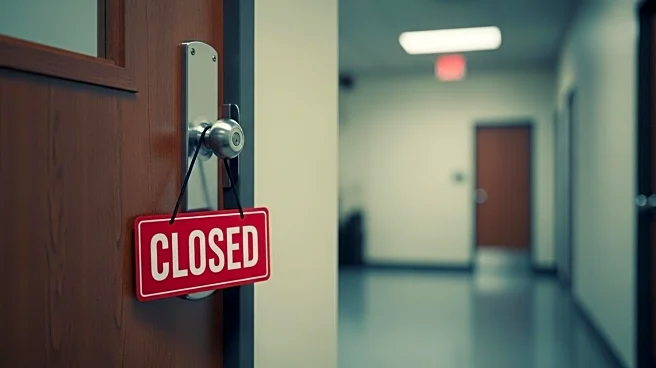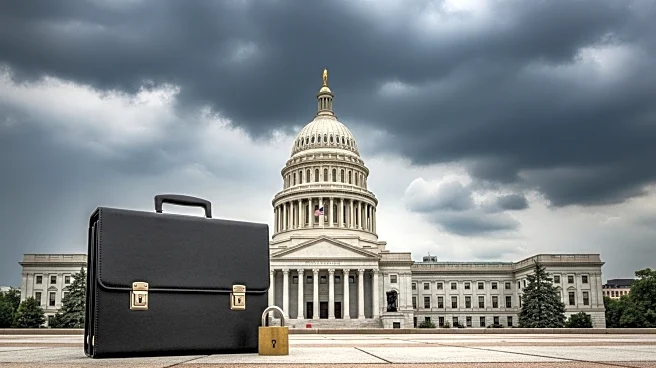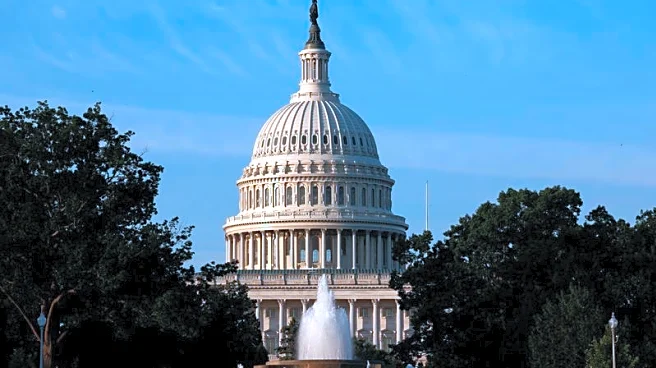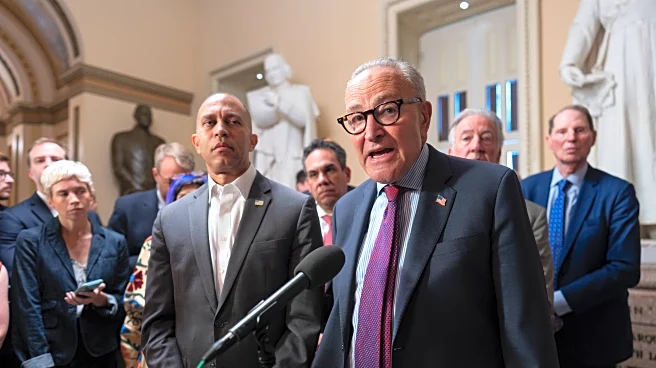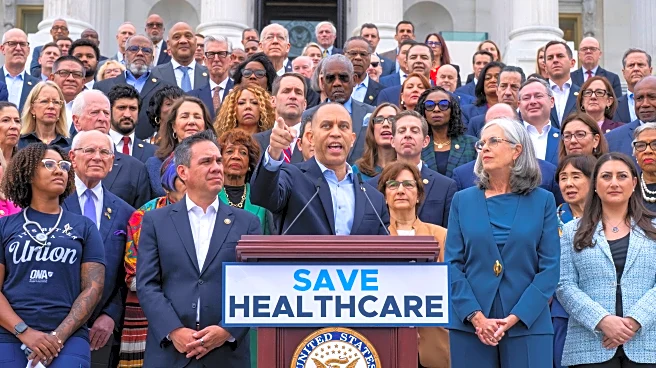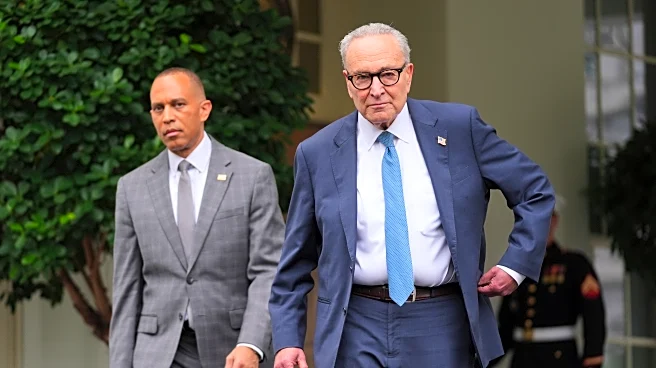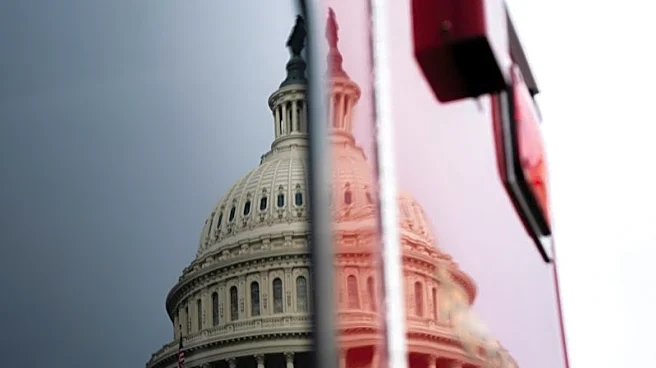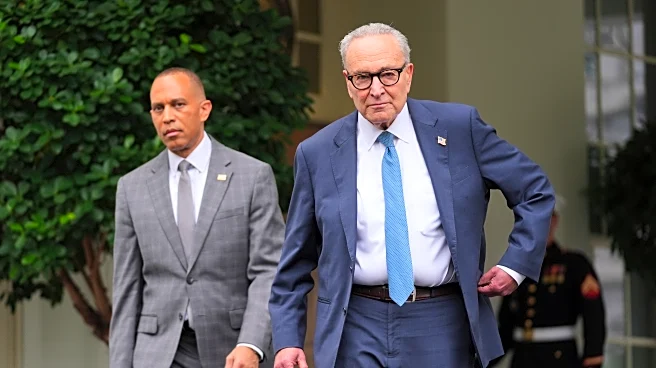What is the story about?
What's Happening?
The United States has entered a government shutdown following a failure by Republicans and Democrats to reach an agreement on extending funding. This marks the first federal shutdown in nearly seven years. The shutdown results from a deadlock in negotiations over budget allocations, leading to a halt in non-essential federal operations. Government workers are facing furloughs, and various public services are expected to be disrupted. The shutdown underscores ongoing partisan divisions in Congress, with both parties unable to reconcile differences over spending priorities.
Why It's Important?
The government shutdown has significant implications for federal employees and the general public. Hundreds of thousands of federal workers are likely to be furloughed, leading to financial uncertainty for many families. Essential services, such as national security and public safety, will continue to operate, but other services may experience delays or temporary cessation. The shutdown also highlights the broader political gridlock in Washington, which could affect public confidence in government institutions. Economically, prolonged shutdowns can have ripple effects, potentially impacting consumer confidence and financial markets.
What's Next?
As the shutdown progresses, pressure will mount on lawmakers to reach a compromise to restore government operations. Negotiations are expected to continue, with both parties likely to face public scrutiny over their handling of the budget impasse. The outcome of these negotiations will determine the duration of the shutdown and the speed at which normal operations can resume. Stakeholders, including federal employees, contractors, and citizens reliant on government services, will be closely monitoring developments.
AI Generated Content
Do you find this article useful?
